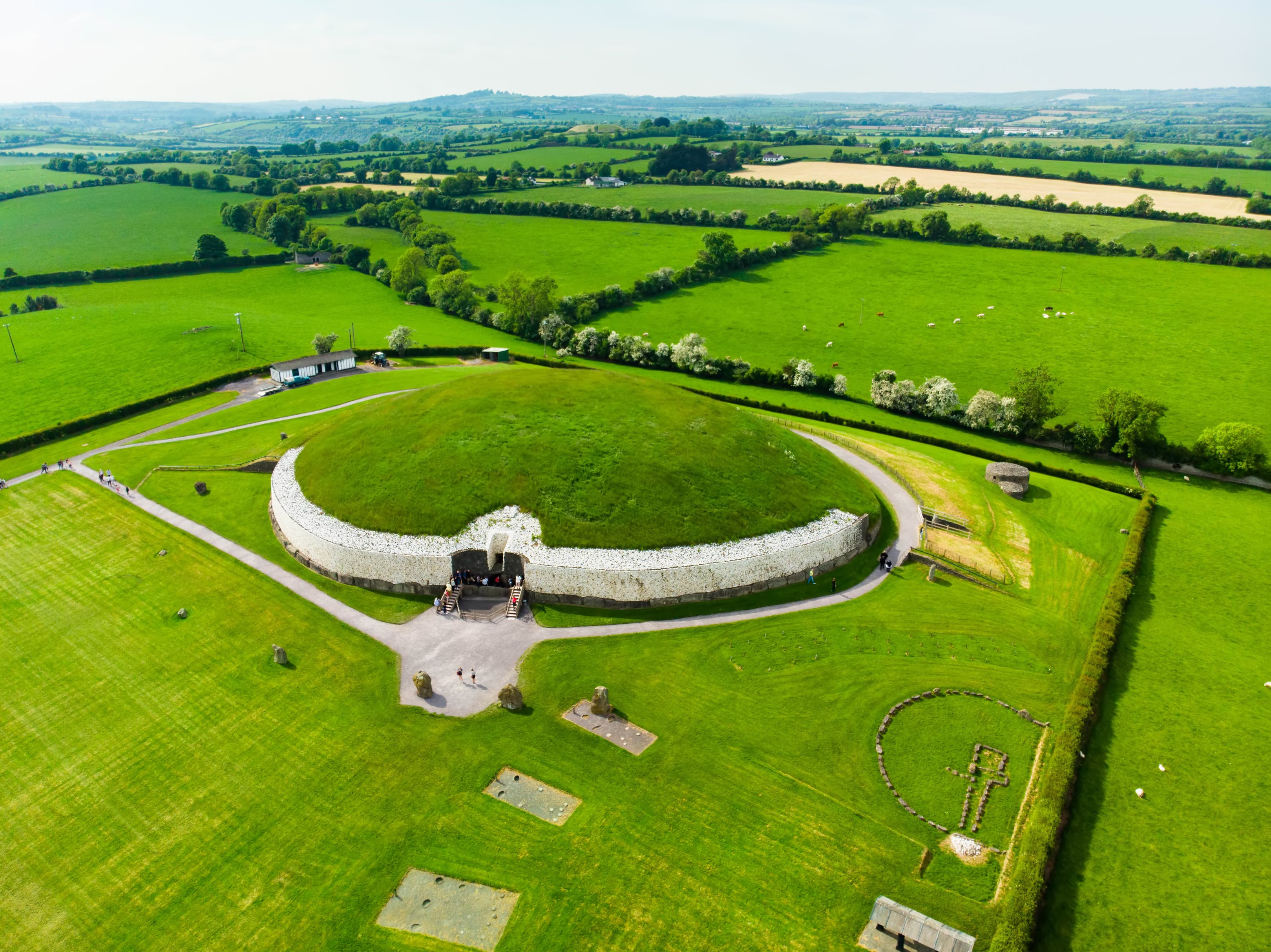"The Celtic Midwinter is also known as Meán Geimhridh or Grianstad an Gheimhridh in Irish. Solstices and equinoxes were thought to be very important to the pre- and early-Celtic people, as seen through the construction of several tombs whose passages align with the solstice sun, such as Newgrange. These solstices were seen as occurring at the midpoint of each season, hence the name ‘Midwinter’ for the Winter Solstice.
In the Celtic landscapes, the winter solstice is an ancient seasonal rite of passage that is ageless. We do know not when our ancestors first stood together and paused in harmony at midwinter. Irish sacred sites such as the world-famous Newgrange cairn, aligned to the morning’s rising sun tell us that over 5,000 years ago, the winter solstice was important enough to build a temple to this poignant solar event. In Irish Gaelic, solstice is ‘grianstad’ (Gree-ann-stad), literally translating as ‘sunstop’.
The roof-box, as the structure is now called, is situated over a small gap, 20 to 25cm wide, between the first two roofslabs of the passage. It is through this slit that the rays of the rising sun penetrate to the chamber at the time of the midwinter solstice. The roof-box is 90cm high, 1m wide, and 1.2m from front to back.
Today many still gather at Newgrange on winter solstice morn to sing and dance or simply stand in awe as, if skies are clear, the golden orb of the sun peaks above ‘Red Hill’. That this still occurs 5,000 years after Newgrange was built is itself an enthralling phenomenon.
This accuracy in describing the sun’s alignment with the Earth helps us to also momentarily stop and integrate our fast-moving modern lives with this plateau of maximum darkness and minimum light.
The experience of darkness is such a different condition to light and is often sadly stigmatised. We are so accustomed to beginning things when the light is turned on, when the sun rises, when we open our eyes and adjust. Yet nature says that beginnings are in the dark. Life first is dreamed and vibrates in the absence of light. The seeds sown in autumn germinate underground through winter before appearing as shoots in spring. Each one of us lived our first nine months or thereabouts in our mother's dark womb.
Our ancestors understood this phenomenon intuitively, acknowledging the new day at dusk and the New Year at Samhain (Hallow'een) regarding the climax of the seasonal darkness of winter solstice as the treasured dreamtime of new life. Nature invites us to become courageous and passionate dreamers in synchronicity with the great natural hibernation about us. Our invitation is to birth new prayers, new wishes, new intentions and new manifestations for ourselves and for our world.
In many traditions, winter solstice, also known as midwinter and the festival of yule, is a time for rituals and celebrations. On the island of Ireland, our ancestors who built Newgrange saw winter solstice as a turning point in which reverence of the vital energies of darkness and lightness were understood, honored and celebrated."
-taken from irishcentral, newgrange, TheMegalithicPortal, and TheCelticJourney wordpress
 |
| Newgrange, 3000 BCE. Ireland. |
 |
The roof box from the outside.
|
 |
| Plan of mound at Newgrange showing the passage and chamber. |
 |
| Plan of the passage and chamber, the passage is shown in 2 sections. |
 |
The roof box, with sunlight penetrating at the time of the midwinter solstice.
|
 |
Plan and sectional elevation of the passage and chamber before excavation.
|
 |
| A rabbit is hiding in a hole of the former wooden henge? in front of Newgrange. |
 |
| Newgrange from the left side. |
 |
| Newgrange entrance closer view. |
 |
| Newgrange engraved stone. |
 |
| Large stone behind the main tumulus. |
 |
| Newgrange engraved stone part of the stone-ring around the tumulus. |
 |
Newgrange engraved stone part of the stone-ring around the tumulus.
|
Source/Quote:






















Comments
Post a Comment